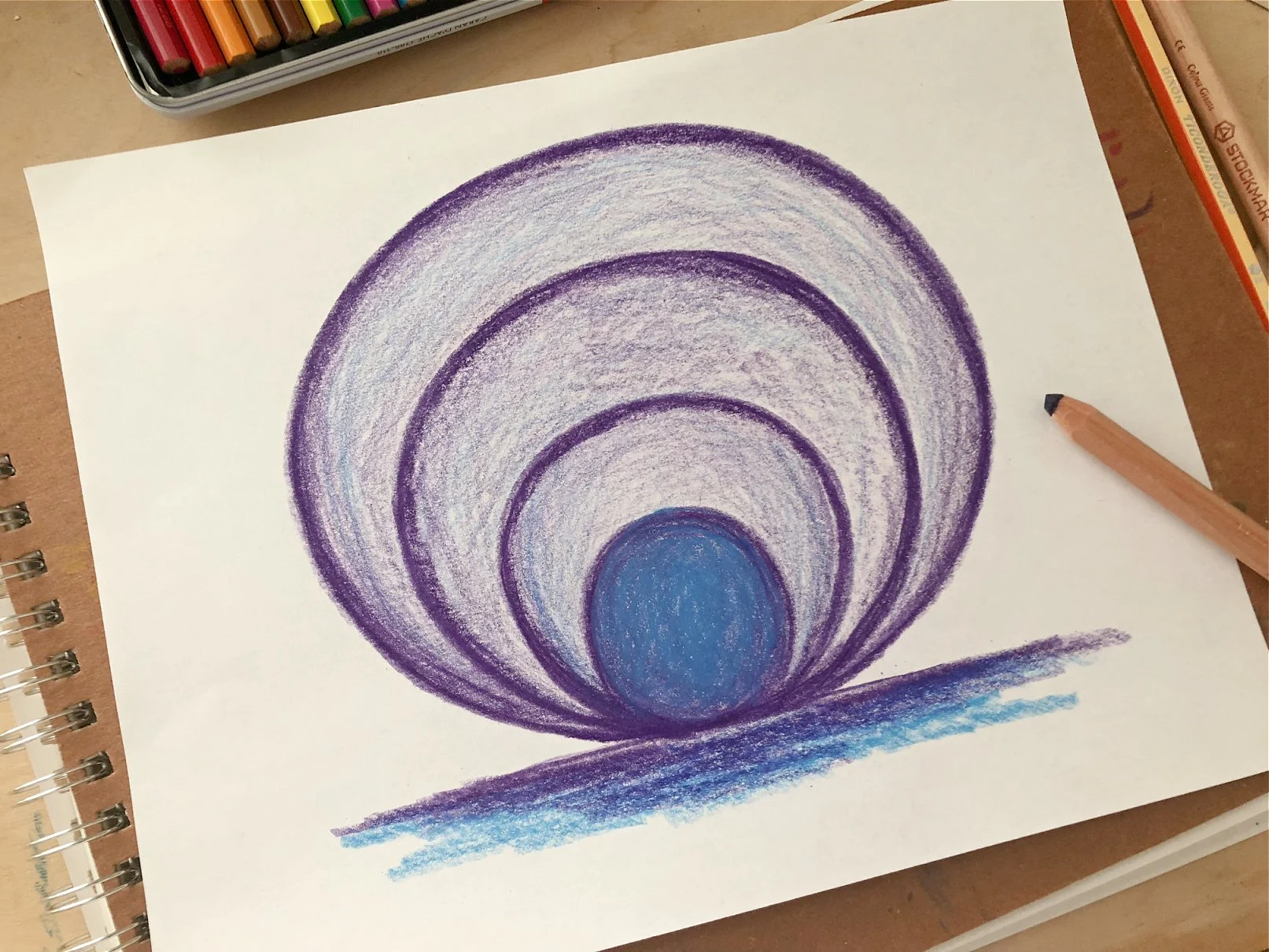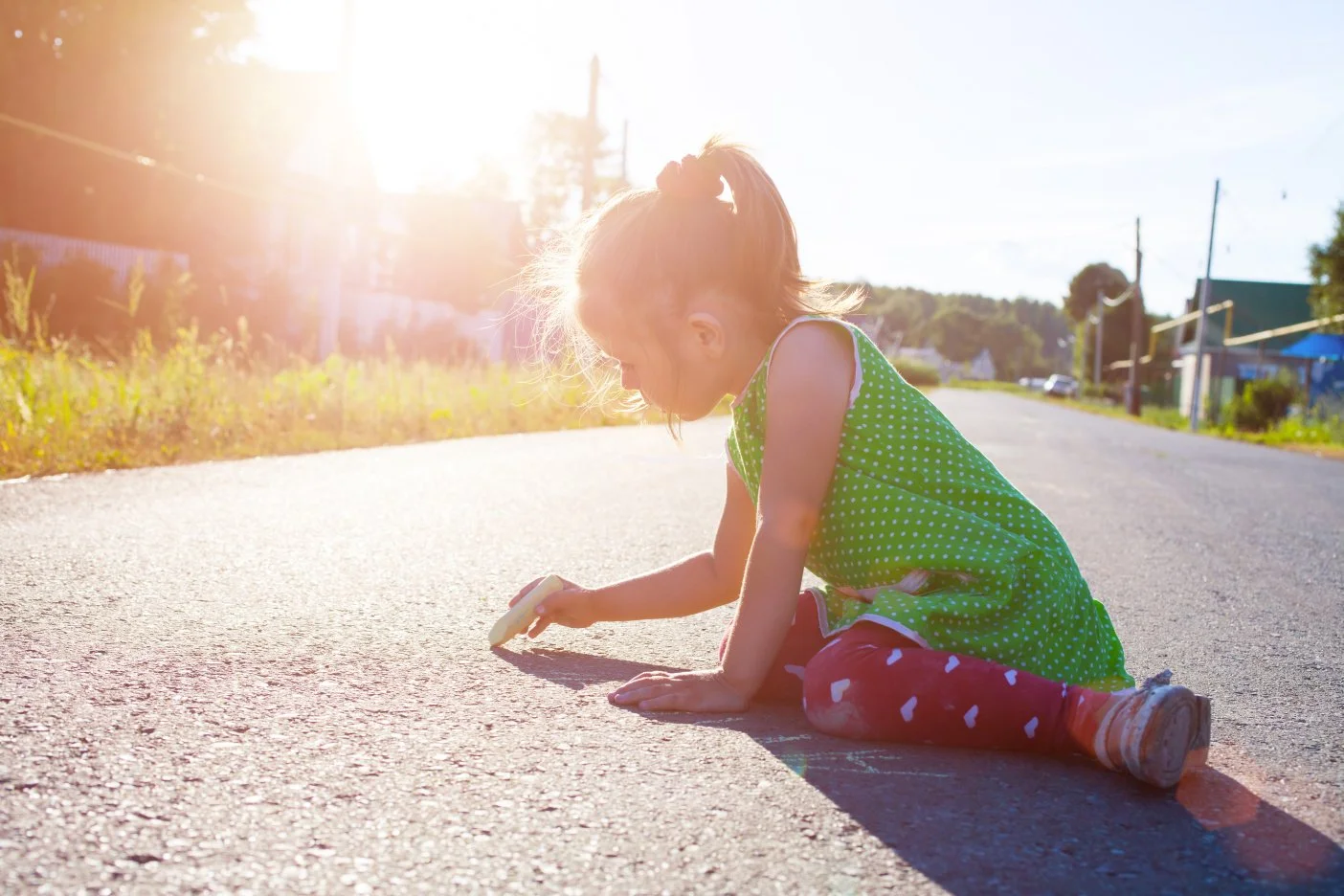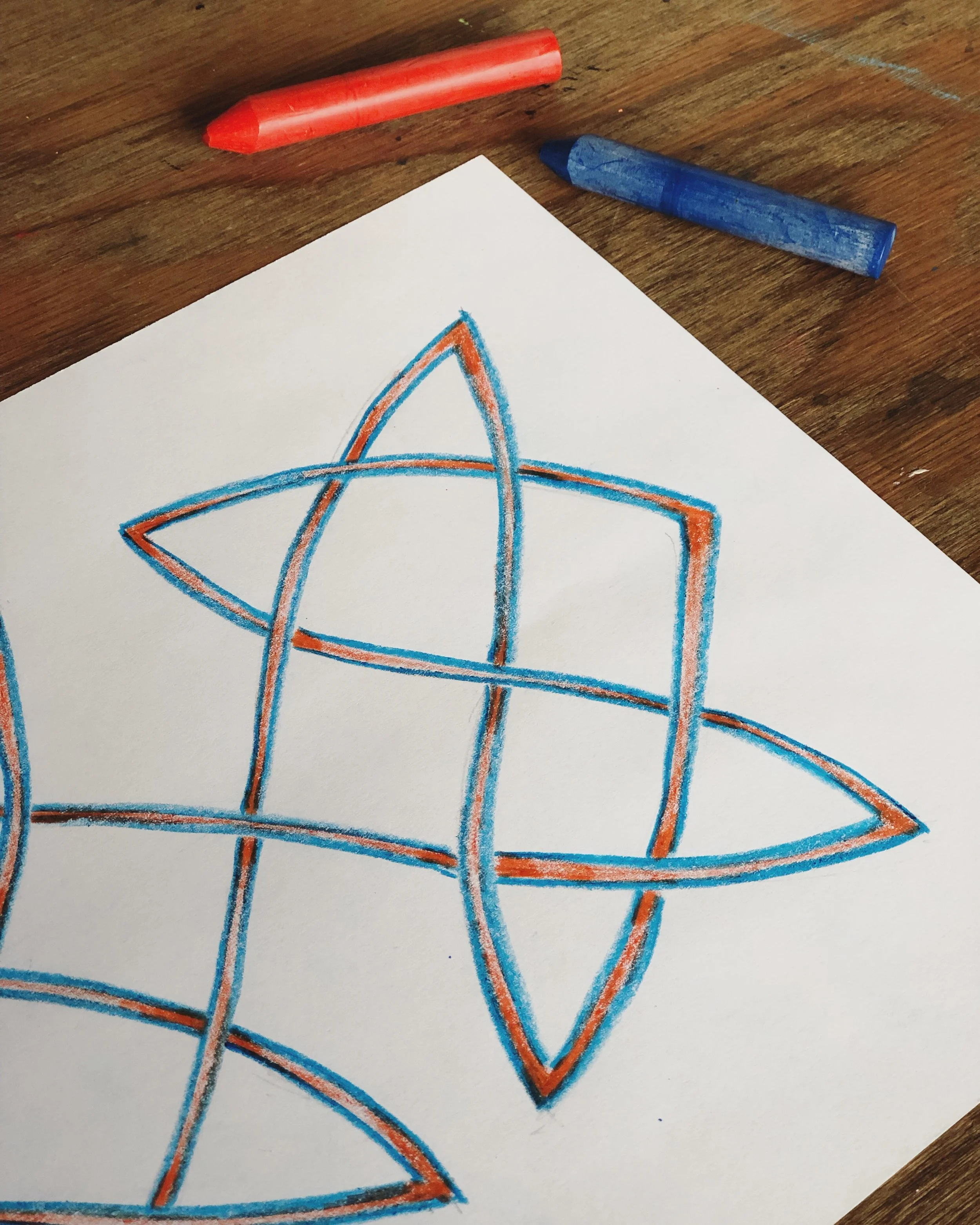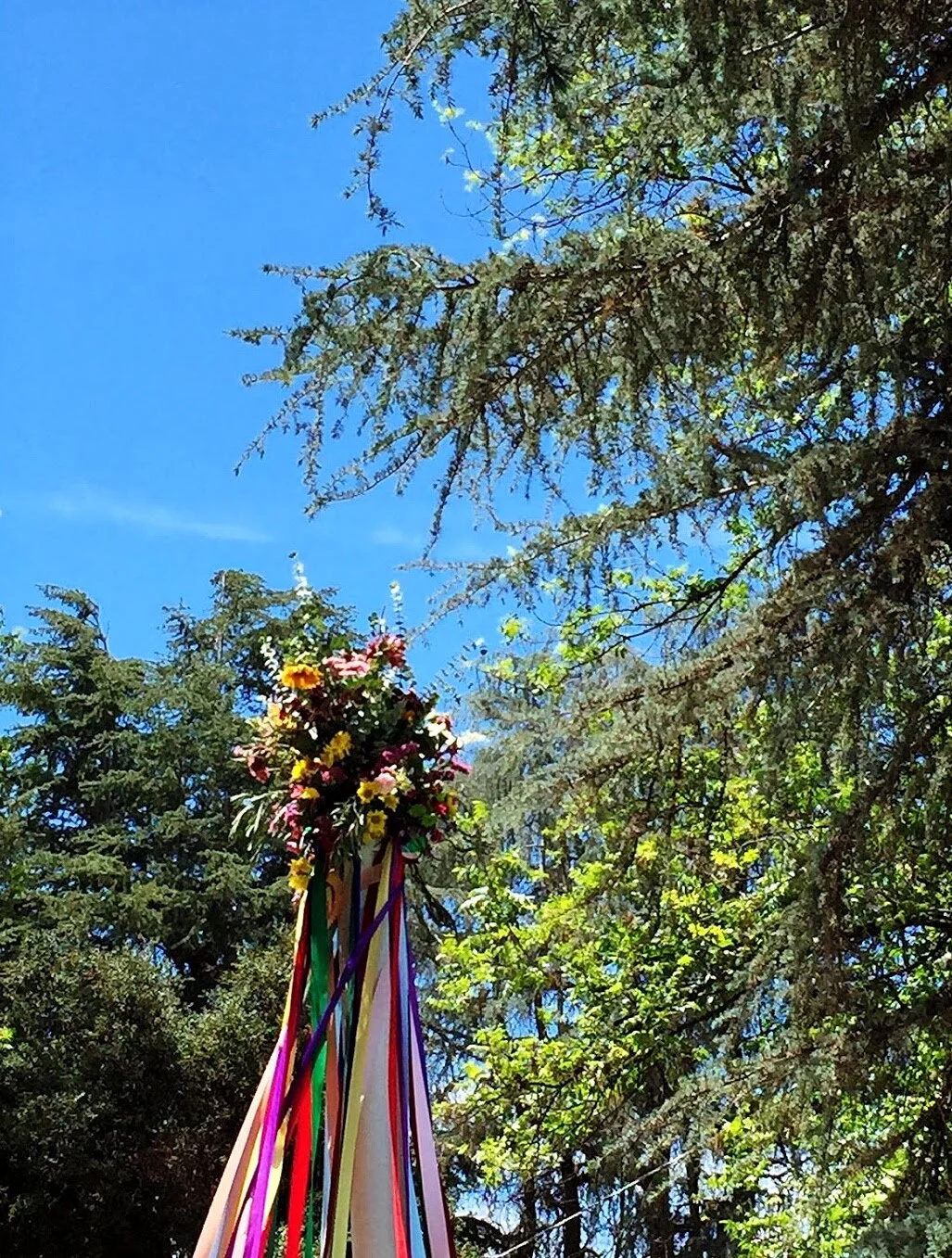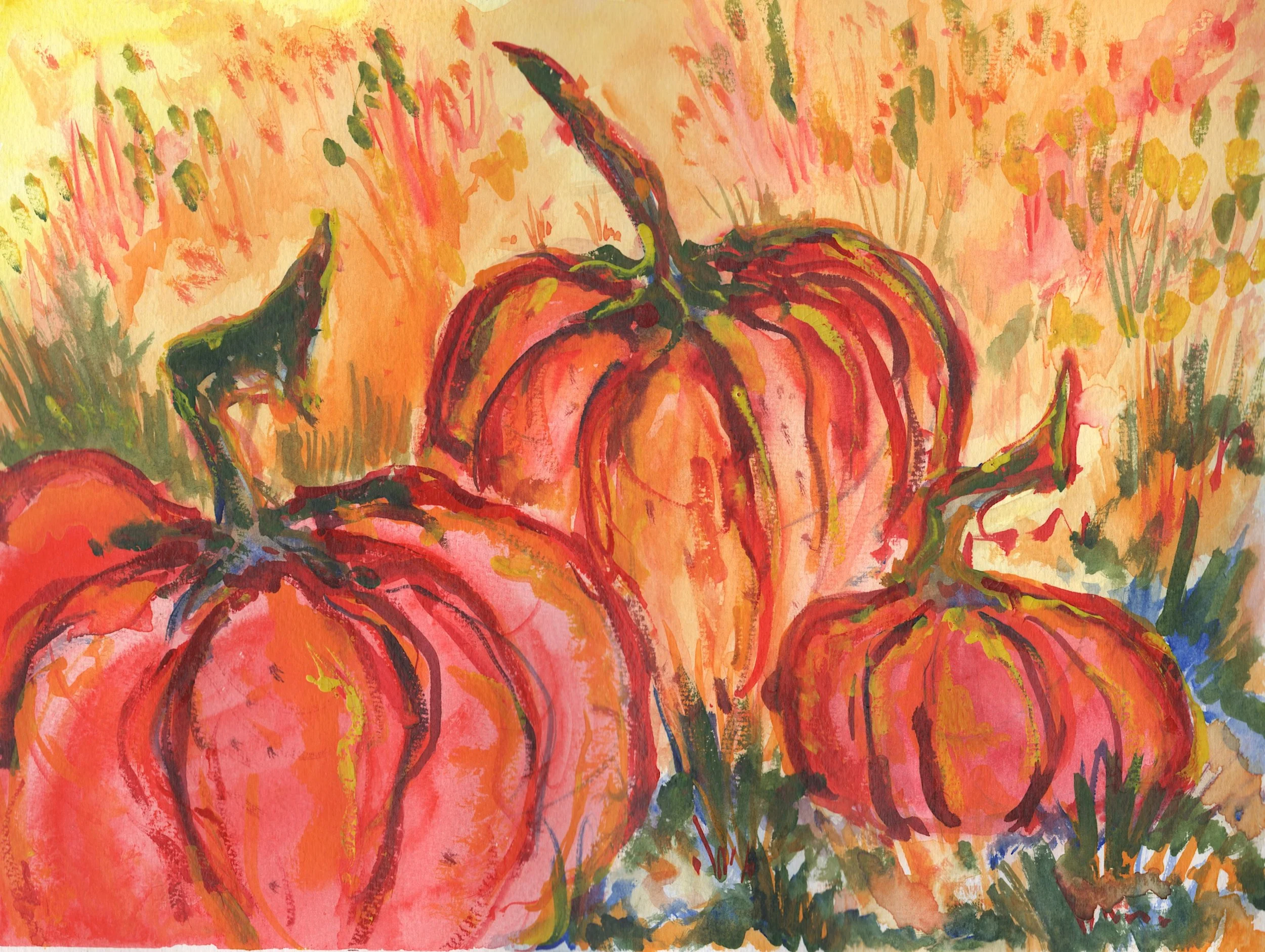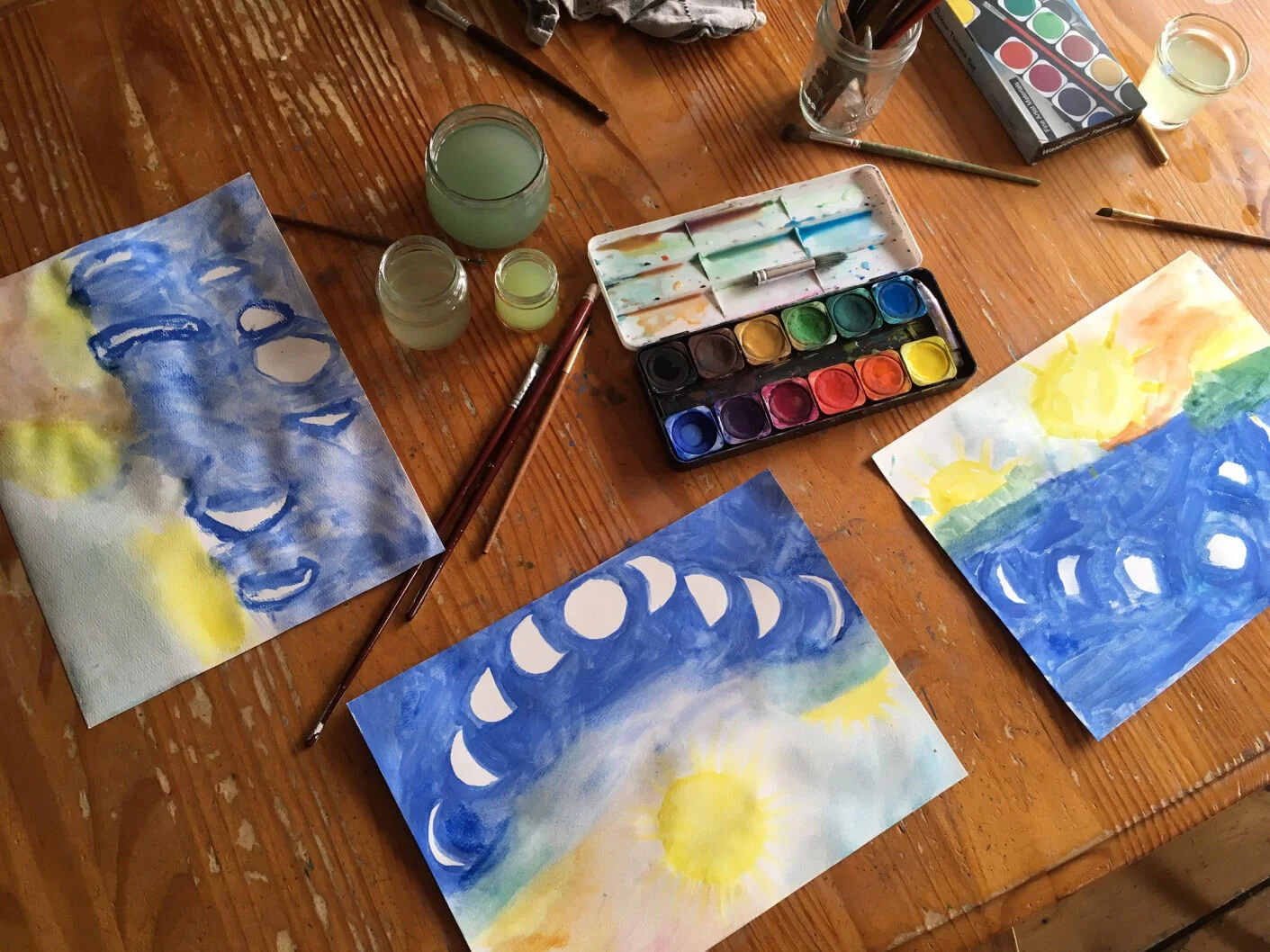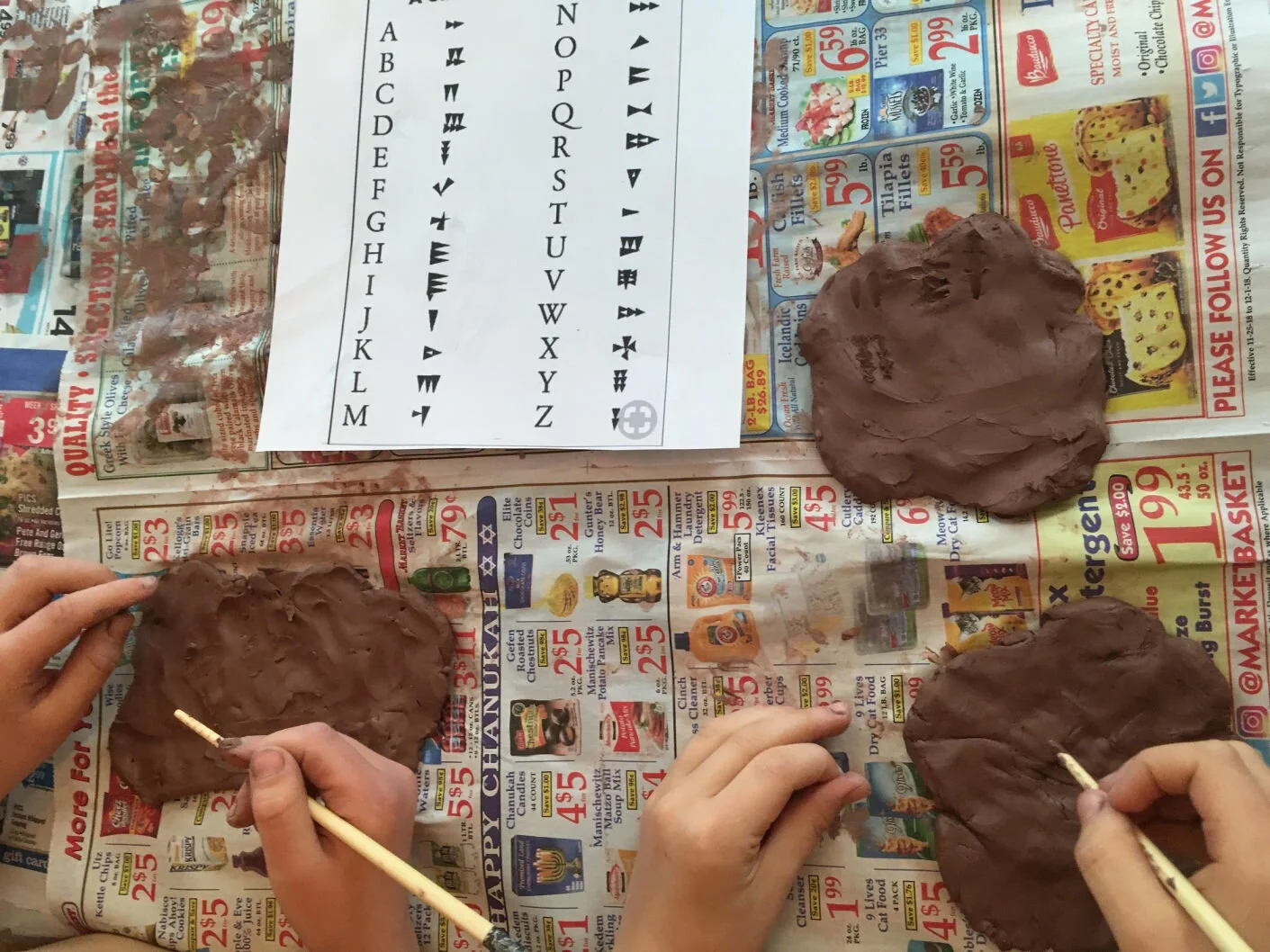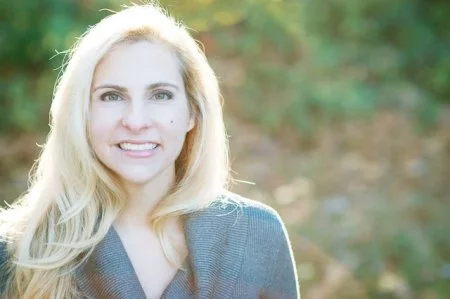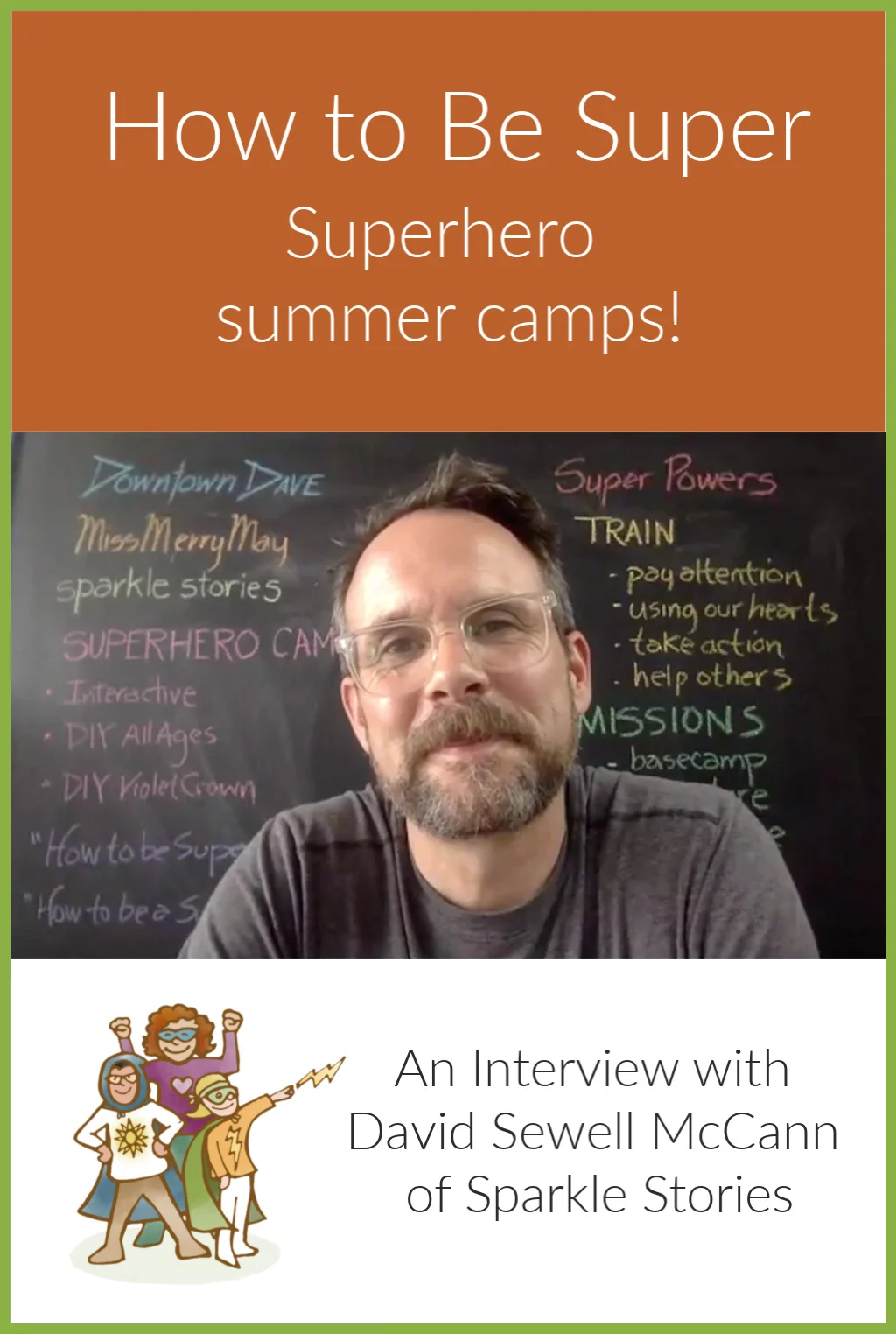
Waldorfish Blog
When children rush - 3 things to consider
Waldorfish Form Drawing teacher Rev Bowen was recently asked by a caregiver enrolled in the course how to work with a child who appears to be rushing through their work. His reply is relevant regardless of the subject being discussed, and we wanted to share it with the Waldorfish community at large!
There are typically three reasons children rush:
1. They feel the work is far too easy, which is never the complete picture.
2. They find the work too challenging.
3. They have a soul habit that the adults around them have engendered, which is virtually always true.
To this lattermost point, I will just remind us all that our culture is fast-paced, convenience, and results-driven. It is very difficult to foster a practice of care and consciousness in these times--but we absolutely must do so.
Take time to observe a child who rushes through their work- you may be surprised at what you discover!
Let’s take a closer look at these 3 possibilities:
1. If the work is actually easy for the student, I then give great focus to the beauty of the work. It is never enough to be right. We must require the "bright" or "advanced" students to take even greater care to be neat, organized, and even beautiful in what they deliver. This will help them enormously when they reach the point of encountering work that truly challenges them.
Picture the math whiz who can do so much work mentally. Their written work in algebra can be scritchy-scratchy, but they have the mental ability to consistently render correct answers. This child may have a destiny to reach great heights in mathematics. However, this will be hindered in advanced classes--perhaps not until late high school or collegiate studies--if the student was never required to work in an organized way. This is true to some extent for every child in all parts of life. Organization and presentation helps.
2. If they find the work too challenging, it is for us to realize this, and adjust so that the work challenges them in a way that they can reach. It is okay for children to sweat. It is okay for a frustrated child to cry. I have seen both in the classroom and I have seen both of these emotional states overcome with diligence and perseverance. These children learned great lessons about meeting resistance, both inward and outward. They learned that they can sometimes achieve more than they at first believe if only they will try and try again. This is a critical human capacity. Thomas Edison tried thousands of filaments for light bulbs before he found one that would work.
3. This is the most common. It is difficult as teachers and parents to instill a strong habit of conscientious work, a devotion to craftsmanship and quality. It may be that the work is neither too easy nor too difficult, but the student simply does not have the habit of attempting his or her best work. This is where the adult teacher or parent must step into his/her ego.
The adult ego knows what is best. The child will almost always seek the path of least resistance, like water finding a crack in a vessel. It is the adult ego which must be the voice of loving authority. That is the balance – LOVING AUTHORITY. One without the other results in a child who will embody either laziness or tyranny.
During the child's growth, the adult must require good effort, good habits, etc. This can be done firmly and lovingly. It does not require the adult to be a drill sergeant. It requires the adult to be consequent and to let the child learn from consequences. It is really that simple.
Also, the adult ego serves as the worthy model.
When the child grows to adulthood, he or she has another habit: whether or not to heed that single voice, sometimes among the many voices of the world, which says what is right and good. That still, small inner voice must be heeded. It will only be so if the child learned to heed the parent's or teacher's voice during childhood.
So, I would begin developing a new habit of effort with your child. This will serve them throughout life. Be aware, new habits require a period of transformation. Just as we encounter in many spiritual texts, this is 40 days (approximately six weeks).
This can be a difficult period, but ultimately worth it.
Festival Life at Home: Making it Work in Trying Times
“The history of our spiritual life is a continuing search for the unity between ourselves and the world.” – Rudolf Steiner
Festival life comes to life with even the smallest details.
It’s a tough year for festival life.
It seems that we are being called to reconsider how we experience it – at least for the time being.
The Waldorf School that my son attended from the ages of 3 to 7 raised relevant questions, when he was in first grade, about what new stories might emerge in the time ahead. How might the greater Waldorf community enlarge the scope of stories told to include some of the collective challenges we face? In all honesty, it seemed like a far-off concept – an interesting one to think about, to be sure, but nothing urgent.
Cut to 2020
Between a global pandemic and fires all along the west coast of the United States (this essay was written in September), I find myself returning to the following questions through clouds of smoke, ash, an evacuation alert, and ongoing quarantine orders:
Nature and festival life coming together to celebrate May Day.
What *are* the stories of our time? What role do festivals play in the education of our children, and how do they enrich our lives?
Robyn Beaufoy and I wrote an essay on festival life that can be found here. In it, we propose that while the power of a group is important, it is the quality of presence of each participant that holds the most potential for inner transformation.
This year, we are being asked to think about these rituals in much smaller groups than we are used to. Don’t shy away from this experience; take the opportunity to see where it leads. This is the spirit of inquiry that was consistently promoted by Rudolf Steiner.
“ We can find Nature outside us only if we have first learned to know her within us. What is akin to her within us must be our guide. This marks our path of enquiry.” – Rudolf Steiner”
There are many ways to approach a festival day at home. I have been doing it for years.
Yet the truth is whether you choose to make dragon-shaped bread for Michaelmas, set aside coats for donation on Martinmas, or create a spiral in your living room made of stuffed animals during Advent, it is the spirit with which you approach each festival that counts. My family has, among other things, formed dragons in sand at the beach, crafted a variety of lanterns over the years, rolled candles, and folded watercolored paper into Brigid’s crosses . Most recently, I have started writing my own festival stories for our son.
Maybe this is how narratives evolve: incrementally, resulting from our individual interests and shared experiences, and above all, our courage and curiosity about ourselves and the world we live in.
Waldorf students of all ages (and their parents!) are delighted by a community festival day – there is nothing like it. Be well, friends. Spring will circle back, as it always does, and we will come together again.
Until then, keep the words of Nelson Mandela close:
“Everyone can rise above their circumstances and achieve success if they are dedicated to and passionate about what they do.”
More festival resources on our site!
About the Author
Cristina Havel lives in Southern California where she and her husband have worked together for nearly 2 decades. They homeschool their son using the Waldorf pedagogy as a guide and believe in the transformative powers of art and nature.
Waldorfish Families - Cheyenne Patterson
Every few weeks on the blog, we spotlight a Waldorfish community family. You are a diverse and global group! We’re pretty sure you’d be bff’s in real life. Today, please enjoy our conversation with Cheyenne Patterson!
(And don’t forget- we’re here for you! If you’re like some support in your homeschooling journey, click here!)
TELL US ABOUT YOURSELF!
I'm a homeschooling mom to Renzo 11, Tre 9, and Penney 6, and wife to Joel. I have always felt like a bit of an anomaly as a super crunchy, health food store owning, Waldorf loving, ballet dancing, artsy, creative, Christian.
HOW DOES YOUR FAMILY START THE DAY?
Our mornings are slow and quiet, the most the peaceful time of day for sure! We are a late family, between the late night dance classes and performances and my husband working late at our store, we tend to do late dinners and late bedtimes. Thankfully the kids are really great at playing quietly or reading until everyone is up and ready for activity. Some mornings we make a big breakfast, but I’ve also gotten the kids in the habit of making their own breakfast on the mornings that I juice. Then we gather to make our plans for the day.
My kids really appreciate a written list of expectations for the day, including both school work and chores. This is also the time of day that we go over any outside-the-home-plans or activities. For years, we would then move on to circle, but as my crew is getting older I’m struggling a bit to settle into what works. We seem to be transitioning to a singing and devotional time for everyone, then first grade movement or song, which my boys surprise me just often enough by jumping in and wanting to join in!
GIVE US A SNAPSHOT OF ANY MANAGEMENT/ORGANIZATIONAL STRATEGIES THAT ARE HELPING YOU FLOW THROUGH YOUR HOMESCHOOLING DAYS.
This year I’ve got three kids in the grades, and although it is different than the year of juggling babies and toddlers with school, it is still a juggle all the same! I find the more we can combine lessons and find overlap the smoother our days go. My fourth grader is equally passionate about ancient history and sciences as my sixth grader, so I only need to alter the length of their writing assignments.
My daughter, on the other hand, really needs her time with fairy tales and the foundations of academics, so I have to be careful to fill her bucket. As far as organization, I have tried quite a few methods. Last year, I printed out everything we would need for the year from various curriculums and online resources, and had my own open-and-go curriculum. It was, in many ways, lovely, but I still tweaked it and rearranged it so much that I'm back to my tried and true classic of just making lists.
The lists for first grade are simple, lists of letters with stories and ideas, lists of math games, lists of read alouds and handwork and art projects. For the boys there are lists of books and projects for each block. Then I have always kept a very informal mental check list for full school days to includes the three R's (reading writing and arithmetic) and something beautiful. If the three R's aren't covered in main lesson, then we will cover them in short independent review for my older ones, and in games or songs in the younger grades.
Using lists works well so that school can happen around living life. We can enjoy good weather days and say yes to field trips and spontaneous play dates without feeling behind or like we need to rush through lessons to catch up. If the next lesson is a three day project but it’s a Friday, we can just pick a different shorter lesson, we don't lose momentum just because we aren't ready for the next thing.
The last thing I utilize that helps keep us going, is planning for the times that I can't be the awesome hands-on teacher that I like to be. They do review days with independent work like math, spelling or cursive copy work books, piano apps, art lessons and math games.
“The goal is that school fits into our life and gives us structure when needed rather than force our life around a school schedule.
”
WHAT ARE SOME OF YOUR FAVORITE RESOURCES? (HOMESCHOOL OR OTHERWISE)
Oh I have so many favorites! As someone who doesn't tend to stick to curriculum but loves reading it for ideas, it’s probably no surprise that I love buying individual blocks from places like Hearth Magic or Ancient Path on Etsy, or blocks from a Waldorf Journey or Magic of Waldorf.
I’m a big fan of the mathbyhand.com Times Tables and Fables Kit, the Living Music from the Heart for recorder, and Out Door Secrets from Simply Charlotte Mason. I always enjoy pursuing book lists from Waldorf and Charlotte Mason curriculums to find the best books. And of course, I love the inspiration from other moms on social media, but I’m not sure I’d be able to do this at all without my real life, in person, homeschool mom friends! I’m also very grateful for the Earthschooling curriculum for such a broad selection of stories for each grade which really brought a sense of freedom to our home school.
WHAT ARE YOU CURRENTLY READING?
I’ve always got a more challenging classic going that I'm half listening to on Libervox - right now it’s Anna Karenina by Leo Tolstoy, which will take me a full year. I’m also reading The Girl with the Pearl Earring by Tracy Chevalier, and I found a 50 cent copy of Beyond the Rainbow Bridge by Barbara J. Patterson and Pamela Bradley that I am enjoying, even though my kids are past this stage. I was wanting something Waldorfy after reading The Brave Learner by Julie Bogart and Mere Motherhood by Cindy Rollins this summer. As a family we are reading Rosemary Sutcliff’s The Odyssey and Swallows and Amazons by Arthur Ransome, I highly recommend both! I just started A Mathematician’s Lament by Paul Lockhart and it’s so great! A must read for any educator!
WHAT DO YOU DO WHEN YOU ARE OVERWHELMED OR STRESSED?
When the overwhelm comes I know it is time to slow way down with school and outside-the-home commitments. It’s a balance because sometimes the overwhelm comes from needing to catch up on house work and adult work, and so it makes sense to put everything on pause to get those caught up. But other times the overwhelm comes from business, and I find creative pursuits and time in nature and daily time in prayer and meditation are such a good antidote to business. I also feel very blessed to be able to take about 5 hours a week of ballet and modern dance classes and it’s so nice to have that built in time to be totally in my body.
PLEASE SHARE SOME WORDS OF WISDOM YOU'VE GLEANED OVER THE YEARS.
There are always those new stages where it is really tempting to think, "Wow my kid is so big, it’s time to really hit the books," or "This school year has got to be really rigorous". But I keep coming back to the idea that school needs to be fun or we are doing it wrong, and it is just as true in sixth grade as it was in kindergarten. Leaving breathing room is paramount both for creative teaching, to stay aware of the climate in our home that is set by our attitudes. It is far more important to prioritize relationships and character.
TELL US A BIT ABOUT HOW WALDORFISH COURSES ARE ADDING TO YOUR SCHOOL YEAR. READY....GO
So far we have enjoyed the Waldorfish courses that are a part of the Earthschooling membership. Waldorf art was such a game changer for us, especially for my oldest who was so afraid of making a mistake that he wouldn't write or draw or paint at all.
“The course on block crayons showed me how to teach how forgiving drawing could be. I’m so glad I didn’t give up, and that we found the Waldorf arts - that I found something that teaches art as a skill that can be improved. ”
My sons are finally really happy with their art, so we are now working our way through the courses again as a family but this time with little sister joining us!
WHERE CAN WE CONNECT WITH YOU?:
Instagram: @cheyenne_and_crew
Related Content:
How To Be Super - a chat with David Sewell McCann
I had a great time talking with David Sewell McCann from How To Story and Sparkle Stories today!
He and his pedagogical partner Meredith have created a fun and nurturing online summer camp experience for children - one that we’re really eager to share with you as it’s a perfect fit for the Waldorfish community!
Listen in….
Click here to Learn more about the How To Be Super summer camps!
The Interactive All Ages camp begins on June 17th and the DIY All Ages camp begins June 21st. The DIY Violet Crown program becomes available to use at your leisure on June 4th!
Thanks David!
Looking for something?
Welcome to Waldorfish! We started this adventure in 2012 out of a desire to make Waldorf training more accessible to class teachers in remote locations and to homeschooling families everywhere! Read more, click here.
WE WON! Our Weekly Art courses were voted “best interactive art program.” Learn more about the award, here.
A few of our most popular blog posts:



